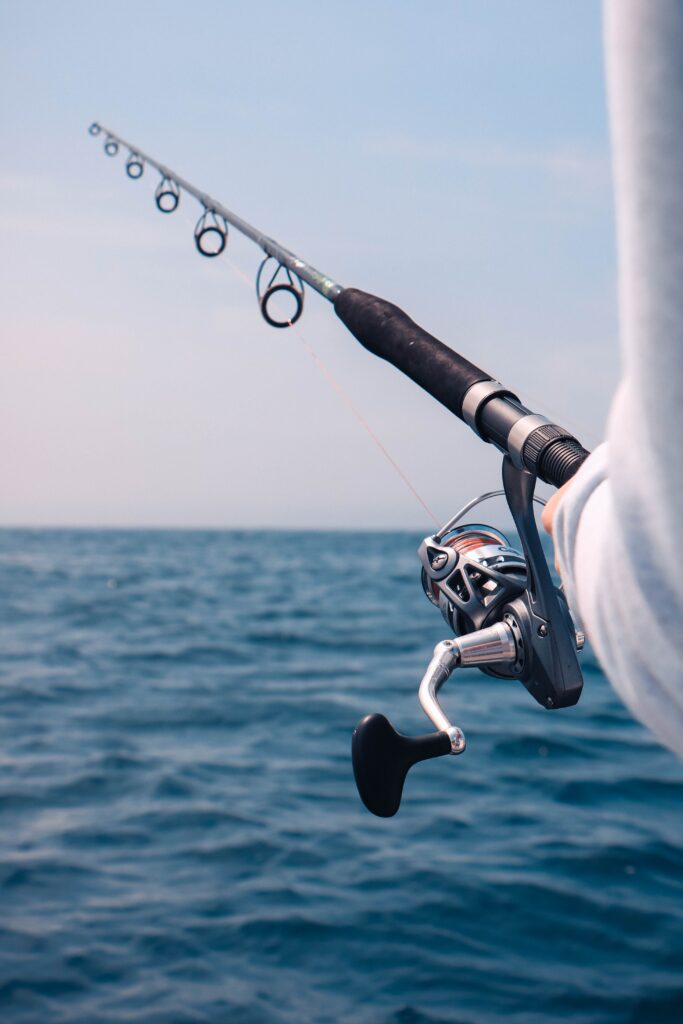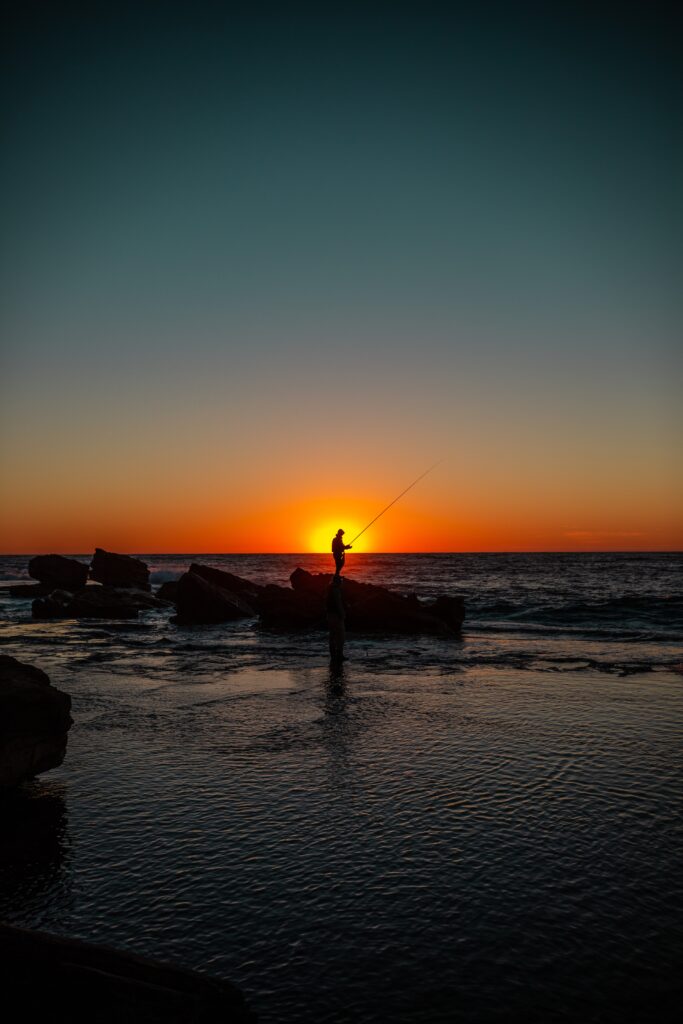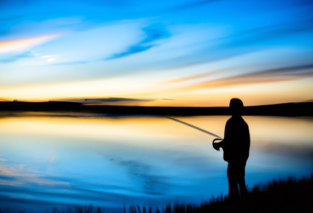October is a great time to head out and enjoy some quality time fishing in the beautiful fall weather. With our “Can You Go Fishing in October: Fall Fishing Tips and Techniques” guide, you’ll discover everything you need to know to make the most out of your fishing excursions this season. From the best techniques to use during this time of year to the top tips for selecting the perfect fishing spots, this comprehensive guide is your key to a successful and enjoyable fall fishing experience. So, grab your gear and get ready for an unforgettable fishing adventure in October!

Choosing the Right Location
Consider Water Temperature
When it comes to fall fishing, one of the most important factors to consider is the water temperature. As the weather cools down, the water temperatures also start to drop. Fish are cold-blooded creatures, which means that their body temperature is regulated by the surrounding water. In the fall, fish tend to migrate to areas with warmer water, such as shallow bays, river mouths, or areas near power plants. By understanding the water temperature preferences of different fish species, you can choose the right location to increase your chances of success.
Research Local Fishing Spots
Before heading out for a fishing trip in the fall, it’s essential to do your research and find local fishing spots that are known for their abundance of fish during this season. Check out online forums, fishing reports, and local fishing clubs to gather information about the best spots in your area. Additionally, consider talking to experienced anglers or local bait and tackle shops for insider tips on where the fish are biting. By gathering as much information as possible about the local fishing spots, you can make an informed decision and maximize your chances of a successful fishing trip.
Identify Active Fish Species
Different fish species have different behaviors and preferences, especially during the fall season. Some species, like salmon and trout, are known for their fall spawning runs, while others, like bass and walleye, become more active as they prepare for the winter months. By identifying the active fish species in your area during the fall, you can tailor your fishing techniques and bait selection accordingly. Researching the behavior and patterns of specific fish species will help you understand their habits and increase your chances of a successful fishing trip.
Selecting the Right Gear
Choosing the Right Fishing Rod
Selecting the right fishing rod is crucial for a successful fall fishing trip. Consider the type of fish you are targeting and the fishing technique you plan to use. For example, if you’re targeting larger fish like salmon or muskie, a sturdier and longer rod will be necessary to handle the fight. On the other hand, if you’re fishing for smallmouth bass or panfish, a lighter and more sensitive rod will allow you to feel even the slightest nibbles. Additionally, pay attention to the rod’s action, which determines how much the rod will bend under pressure. A faster action rod is suitable for quick hook sets, while a slower action rod allows for a more gradual bend, ideal for fighting larger fish.
Selecting the Appropriate Fishing Line
Choosing the right fishing line is equally important as selecting the right fishing rod. In the fall, the water may become clearer, and fish may become more cautious. Therefore, using a line with low visibility, such as fluorocarbon or monofilament, can increase your chances of success. Fluorocarbon lines are virtually invisible underwater, making them a popular choice for fall fishing. Monofilament lines, on the other hand, offer good strength and flexibility. However, if you’re targeting larger fish or fishing in heavy cover, consider using a braided line for added strength and durability.
Picking the Right Hooks and Lures
When it comes to fall fishing, having the right hooks and lures can make all the difference. Consider the type of fish you are targeting and their feeding habits. Different fish species have different preferences when it comes to bait and presentation. For example, bass are known for their love of soft plastic lures, while trout are often caught using small inline spinners or live bait. Additionally, pay attention to the size and color of your lures. In the fall, fish tend to be more selective, so using smaller, more natural-looking lures can increase your chances of attracting a bite. Experiment with different hooks and lures until you find the right combination that works for you and the fish species you’re targeting.

Understanding Fall Feeding Patterns
Fall Transition Period
In the fall, fish go through a transition period as they adjust to the changing environmental conditions. Many fish species change their feeding habits during this time, as they prepare for the winter months ahead. Understanding the fall transition period can help you identify when and where the fish will be actively feeding. Typically, as water temperatures drop, fish become more active and start to feed more aggressively. They may move from deeper waters to shallower areas in search of food. Pay attention to changes in water temperature, weather patterns, and the behavior of fish to determine when the fall transition period is in full swing.
Identifying Prey Species
To effectively target fish during the fall, it’s essential to identify the prey species that fish are actively feeding on. As the seasons change, so do the preferences of fish when it comes to food. Many fish species in the fall feed on smaller baitfish, such as shad, minnows, or perch. By understanding the feeding preferences of the fish species you’re targeting, you can choose lures or bait that mimic the natural prey of the fish. Matching the hatch, as it’s often referred to, increases your chances of enticing a strike and hooking a fish.
Focusing on Prime Feeding Areas
During the fall, fish concentrate in certain areas where food is abundant and conditions are favorable for feeding. These prime feeding areas can vary depending on the body of water and the fish species you’re targeting. Look for areas with deep drop-offs, submerged structures, or weed beds, as these often provide cover and attract baitfish. Additionally, pay attention to areas with current or where two bodies of water meet, as these areas can create natural feeding opportunities for fish. By focusing your efforts in prime feeding areas, you increase your chances of coming into contact with actively feeding fish.
Adjusting Techniques for Fall Fishing
Slowing Down Your Presentation
In the fall, fish tend to be more sluggish due to the dropping water temperatures. They may not be as aggressive as they were during the summer months. To adapt to the fish’s slower metabolism, consider slowing down your presentation. Retrieve your lures or bait at a slower pace, giving the fish ample time to strike. This technique is especially effective when using soft plastic lures or jigs, as it allows the bait to stay in the strike zone longer, increasing the chances of enticing a bite. Remember to be patient and give the fish enough time to react to your presentation.
Using Natural Colors and Patterns
As the seasons change, so do the colors and patterns of the underwater environment. To increase your chances of success, try using lures or bait that mimic the natural colors and patterns of the fish’s prey. In the fall, fish are often feeding on smaller baitfish, which are usually silver, white, or translucent in color. Choosing lures or bait in these natural colors can make your presentation more appealing to the fish. Additionally, consider using lures with realistic patterns, such as scales or eyes, as these can further enhance the illusion of a natural prey item.
Experimenting with Different Retrieves
One of the joys of fall fishing is the opportunity to experiment with different retrieves. As fish become more active and aggressive during the fall transition period, they may respond to a variety of retrieves. Try mixing up your retrieve speed, pausing occasionally, or adding subtle twitches to your bait. This can trigger a reaction bite from fish that may be following your lure or bait. Be open to trying different techniques and pay attention to the fish’s response. What works on one day may not work on another, so don’t be afraid to experiment and adapt your tactics accordingly.

Utilizing Fall Fishing Strategies
Try Jigging Techniques
Jigging is a popular fall fishing technique that can yield great results. Jigs are versatile lures that can be fished at various depths and in different water conditions. In the fall, fish often gather in deep drop-offs or around submerged structures, making jigging an effective way to target them. Choose a jig that matches the size and color of the fish’s natural prey and experiment with different jigging techniques. Vertical jigging, casting and retrieving, or dragging the jig along the bottom can all be effective methods for enticing a strike. Be patient and allow the jig to reach the desired depth before starting your retrieve.
Using Live Bait Effectively
Live bait can be highly effective during the fall, as fish become more selective and cautious about their food choices. Using live bait, such as minnows, worms, or leeches, can entice even the most finicky fish to bite. When using live bait, it’s important to present it in a natural and enticing manner. Consider using a slip bobber to suspend the bait at the desired depth, allowing it to move freely in the water. This mimics the movements of natural prey and increases the chances of attracting a strike. Remember to handle live bait with care and follow any local regulations regarding the use of live bait.
Targeting Shallow Water
While fall fishing often brings to mind images of deep-water fishing, targeting shallow water can also be productive during this season. As water temperatures drop, fish may move closer to the shorelines or shallow flats in search of warmer water and abundant food sources. This can offer anglers the opportunity to target fish in shallower waters, especially during the warmer parts of the day. Pay attention to areas with structure or cover, such as fallen trees, weed beds, or rocky areas, as these can attract fish seeking shelter or ambush points. Cast your lures or bait along the edges of these areas and be prepared for a potential strike.
Being Prepared for Weather Changes
Consider Temperature Fluctuations
Fall weather can be unpredictable, and temperature fluctuations are common during this season. Before heading out for a fishing trip, it’s essential to consider the potential changes in weather and how they may affect the fish’s behavior. As water temperatures drop, fish may become less active and seek shelter in deeper waters. Conversely, a sudden warm spell can trigger increased activity and feeding. It’s important to monitor weather forecasts and plan your fishing trips accordingly. Dressing in layers can help you stay comfortable and be prepared for any temperature fluctuations you may encounter.
Prepare for Windy Conditions
Fall is known for its windy conditions, which can pose a challenge for anglers. Strong winds can create rough water, making it difficult to navigate or cast your lures accurately. However, windy conditions can also create opportunities for success. Wind causes surface disturbance, which can attract baitfish and, consequently, larger predatory fish. In windy conditions, consider casting your lures or bait towards the wind to take advantage of the natural drift and movement of the water. Additionally, adjust your casting technique to accommodate for the wind, ensuring that your presentation lands in the desired area.
Pack Rain Gear
Fall weather often brings rain showers, so it’s essential to be prepared and pack appropriate rain gear. Getting wet while fishing can not only make you uncomfortable but also affect your safety and overall fishing experience. Invest in a good quality rain jacket and pants that are waterproof and breathable. Additionally, pack waterproof boots or waders to keep your feet dry. Being prepared with rain gear will allow you to stay focused on fishing and enjoy your time on the water, regardless of the weather conditions.

Maintaining Patience and Persistence
Stay Focused and Concentrated
Fall fishing requires a certain level of patience and concentration. As fish become more selective and their feeding windows shorten, it’s essential to remain focused and attentive on the water. Pay close attention to your surroundings, looking for signs of fish activity, such as baitfish jumping or birds diving. Stay alert and maintain a positive mindset, even during slower periods, as fishing conditions can change rapidly. By staying focused and concentrated, you increase your chances of noticing subtle strikes or changes in fish behavior that may lead to a successful catch.
Try Different Locations and Techniques
If you’re not having success in a particular location or with a specific technique, don’t be afraid to switch things up. Fall fishing often requires anglers to be adaptable and willing to try new strategies. If one fishing spot isn’t producing any bites, consider moving to a different area. Likewise, if a certain lure or bait isn’t getting any attention, experiment with different options until you find what works. Having a variety of lures, bait, and techniques in your fishing arsenal will allow you to adapt to changing conditions and increase your chances of catching fish.
Practice Catch and Release
Fall fishing is a great time to practice catch and release, as many fish species are preparing for the winter months ahead. By releasing your catch, you are allowing the fish to continue their natural life cycle and potentially be caught by another angler in the future. Follow proper catch and release techniques, such as handling the fish with wet hands or using a landing net to minimize stress and injury. If you do decide to keep some fish for consumption, ensure that you follow local regulations regarding size limits, bag limits, and catch-and-release practices.
Staying Safe While Fishing
Wear a Life Jacket
Regardless of the season, safety should always be a top priority while fishing. In the fall, water temperatures can be colder, and hypothermia is a real risk if you accidentally fall into the water. To stay safe and minimize the risk of drowning, always wear a properly fitting and Coast Guard-approved life jacket while on the water. Make sure the life jacket is in good condition and securely fastened at all times. A life jacket can provide the necessary buoyancy to keep you afloat and increase your chances of survival in case of an accident.
Notify Someone of Your Fishing Plans
Before heading out for a fall fishing trip, it’s a good practice to notify someone of your fishing plans. Let a family member or friend know where you’re going, the approximate duration of your trip, and when they should expect to hear from you. This information can be crucial in case of an emergency or if you encounter any unexpected difficulties during your fishing expedition. Additionally, consider bringing a cell phone or a communication device with you, ensuring that it is fully charged and kept in a waterproof case.
Be Cautious of Slippery Conditions
Fall weather often brings wet and slippery conditions, especially near bodies of water. Wet leaves, moss-covered rocks, or muddy banks can all pose a risk of slips and falls. To avoid accidents, walk carefully and use proper footing techniques. Wear appropriate footwear with good traction, such as rubber-soled boots or shoes with non-slip soles. Consider using a walking stick or trekking poles to provide added stability and balance, especially when navigating uneven terrain. Being cautious and aware of your surroundings will help ensure a safe and enjoyable fall fishing experience.

Understanding Relevant Fishing Regulations
Check Local Fishing Regulations
Before you head out for a fall fishing adventure, make sure to check the local fishing regulations and abide by them. Fishing regulations can vary from one region to another, and it’s important to be aware of the rules and limitations in your area. Pay attention to size limits, bag limits, and any specific fishing seasons or closures. Some areas may have restricted access or require special permits or licenses. By familiarizing yourself with the local fishing regulations, you can ensure that you are fishing legally and responsibly.
Know the Limits and License Requirements
In addition to understanding the fishing regulations, it’s important to know the limits and license requirements for the specific fish species you’re targeting. Many states and countries have specific limits on the number and size of fish that can be harvested. By knowing these limits, you can fish sustainably and help protect the fish populations for future generations. Additionally, make sure to obtain the necessary fishing licenses or permits before you start fishing. Requirements may vary depending on your location, age, and the type of fishing you plan to do. Check with the local fishing authorities for detailed information on license requirements.
Practice Ethical Fishing
Ethical fishing practices go beyond simply following the regulations and limits. As an angler, it’s important to prioritize the well-being of the fish and their habitat. Use proper handling techniques to minimize stress and injury to the fish. Use barbless hooks or pinch down the barbs to make the hook removal process easier and less damaging to the fish. If catch and release is practiced, release the fish quickly and gently, ensuring that it has fully recovered before swimming away. Additionally, avoid littering on the water or leaving any trash behind. Practice Leave No Trace principles and leave the fishing spot cleaner than you found it.
Enjoying the Fall Fishing Experience
Appreciating the Beauty of Fall Foliage
Fall fishing offers the opportunity to enjoy the stunning beauty of nature’s colors as the leaves change. The vibrant reds, oranges, and yellows of the foliage can create a picturesque backdrop for your fishing trip. Take a moment to appreciate the natural beauty around you and the tranquility of the surroundings. Fall provides a unique and memorable experience for anglers, and immersing yourself in the beauty of the season can enhance your overall fishing experience.
Taking Time to Relax and Reflect
Fall fishing can provide a sense of tranquility and peace, allowing you to escape from the hustle and bustle of everyday life. Take the time to relax and enjoy the solitude of the water. Use fishing as a way to disconnect from technology and reconnect with nature. Reflect on your experiences, appreciate the solitude, and recharge your mind and body. Fishing can be a form of relaxation and meditation, offering mental and emotional benefits beyond the pursuit of catching fish.
Creating Lasting Memories with Friends and Family
Fishing is a wonderful activity to enjoy with friends and family, and fall fishing provides the perfect opportunity to create lasting memories together. Invite your loved ones to join you on a fishing trip and share the joy and excitement of catching fish. Bonding over shared experiences and creating memories in the great outdoors can strengthen relationships and foster a sense of unity. Whether it’s a weekend getaway or a simple day trip, fall fishing can bring friends and family closer and provide a shared sense of adventure and accomplishment.
In conclusion, fall fishing offers a unique and rewarding experience for anglers of all skill levels. By considering the water temperature, researching local fishing spots, and identifying active fish species, you can choose the right location for a successful fishing trip. Selecting the right gear, understanding fall feeding patterns, and adjusting your techniques accordingly can further increase your chances of catching fish. Being prepared for weather changes, staying safe, understanding fishing regulations, and practicing ethical fishing are essential aspects of responsible angling. Most importantly, enjoy the beauty of fall foliage, take time to relax and reflect, and create lasting memories with friends and family. Happy fall fishing!





